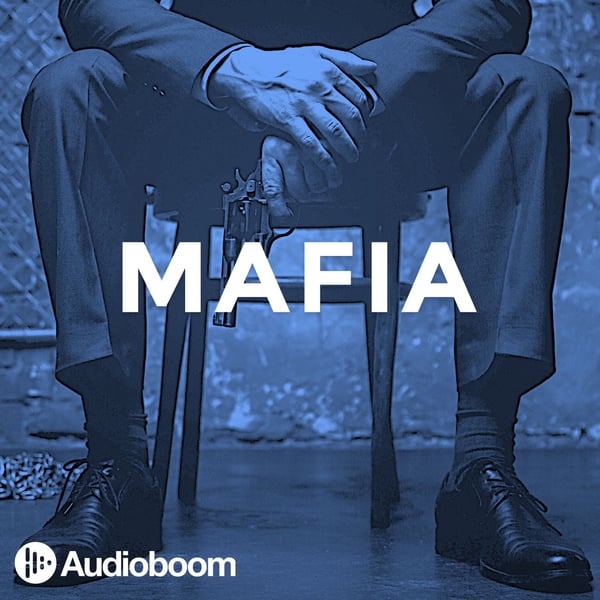S2 Ep13: Bonus 01: The Jewish Connection
Mafia
Audioboom Studios
4.4 • 3.2K Ratings
🗓️ 19 September 2018
⏱️ 26 minutes
🧾️ Download transcript
Summary
Our sponsor for this episode is Button Man by Andrew Gross from St. Martin's Press.
Mafia's theme is "Spellbound Hell" by Damiano Baldoni. Music in this episode is "Misery" and "Life" by Damiano Baldoni; "Low Horizon" by Kai Engel; "Ma Gee Katadai" and "Diya Kinduriya" by HR Jothipala; "She Wolf in My Heart" by Sergey Cheremisinov; "Unanswered Questions", "Backed Vibes Clean," and "Night at the Docks," by Kevin MacLeod; and "сеанс" by Kosta T. Sound Effects by RTB45 from freesound.org. Licensed under Creative Commons: By Attribution 3.0 License
Transcript
Click on a timestamp to play from that location
| 0:00.0 | From the early days of street thugs to the far reaching arms of the commission, the American mafia has always been believed to be a largely Italian affair. |
| 0:12.0 | But there had always been a strong Jewish connection, especially in the early part of the 20th century. |
| 0:21.0 | Though there were mums and gangs of varying groups, the Jewish or Yiddish mafia were some of the most influential and the most ruthless. |
| 0:32.0 | Known as the Koshernostra or Ulsaštik, they were prolific in bootlegging, founded Las Vegas, and were an integral part of the mafia's group of assassins, Murder Inc. |
| 0:47.0 | This is mafia, the Jewish connection. |
| 0:59.0 | In the early 20th century, hundreds of thousands of immigrants settled in New York City. Among them were Italians, mostly from the South of Italy, and Jews from Eastern Europe. Author Eric Dezenhall. |
| 1:13.0 | The history of organized crime in America is basically the history of immigration. |
| 1:18.0 | The Jewish influx came basically before the Italian influx, which is why the Jewish rackets were bigger before the Italian rackets got big. |
| 1:29.0 | And so it was all a function of timing. If you look back in the mid 1800s, you had Irish people who got here before that, so they predominated. |
| 1:40.0 | So when people talk about the religions and races that are involved with organized crime, you can really just trace it back to when they got here. |
| 1:52.0 | The man largely considered the father of modern organized crime was Arnold Rothstein, a Jewish gambler from New York City. |
| 2:02.0 | Rothstein was the son of a wealthy businessman who could have become a successful banker or a stockbroker. Instead, he chose to make money through high stakes gambling rackets. |
| 2:14.0 | His biggest racket? He claimed to have fixed the 1919 World Series. |
| 2:21.0 | Crime author, Selwyn Ram. |
| 2:23.0 | He had heard that some Chicago White Sox players were unhappy with their own Charles Komisky, and Komisky was known for being a cheapskate, not paying them what they were worth. |
| 2:35.0 | And even skimping on giving them bonuses for being the best team in the American League, and obviously the best bet to win the World Series. |
| 2:46.0 | So what happened was Rothstein heard somebody he knew had a connection to White Sox players, and he sent the words that there could be big dough to the players if they double crossed Komisky, took a bribe and blew the World Series. |
| 3:03.0 | And some of these players thought this was a way of revenge, retaliation for Komisky underpaying them. And that was the way Rothstein, through intermediaries, got to the White Sox players. |
| 3:20.0 | Nicknamed the Brain, Rothstein was the man who taught the mob to think like a business, act like a business, and look like a business. |
| 3:29.0 | He became a mentor to rough street thugs who would become notorious and powerful mobsters themselves, journalist Doug Valentine. |
| 3:37.0 | The original mafia bosses in New York probably emerged at the very end of the 19th century, at a time when immigration was booming in New York City. |
| 3:53.0 | What they called the mustache peets, they were in power through the 1920s. And at that particular time, because of their prohibition on their subordinates from actually getting involved in narcotics in an industrial way, narcotic trafficking in the United States, largely out of New York, but in every other city as well, fell under the osmosis of all of them. |
... |
Please login to see the full transcript.
Disclaimer: The podcast and artwork embedded on this page are from Audioboom Studios, and are the property of its owner and not affiliated with or endorsed by Tapesearch.
Generated transcripts are the property of Audioboom Studios and are distributed freely under the Fair Use doctrine. Transcripts generated by Tapesearch are not guaranteed to be accurate.
Copyright © Tapesearch 2025.

